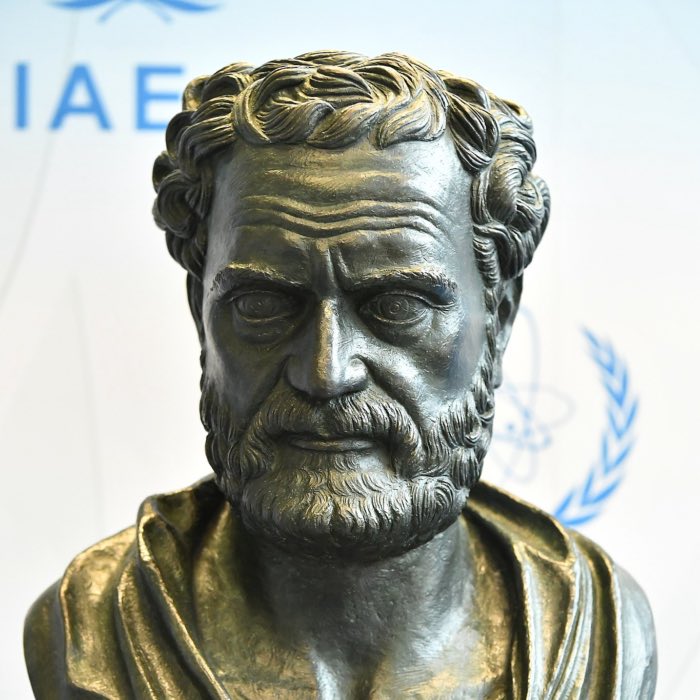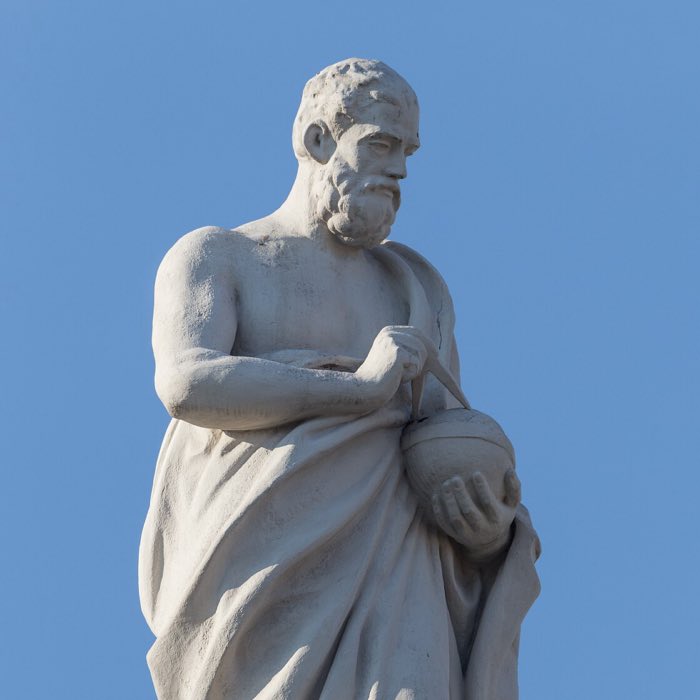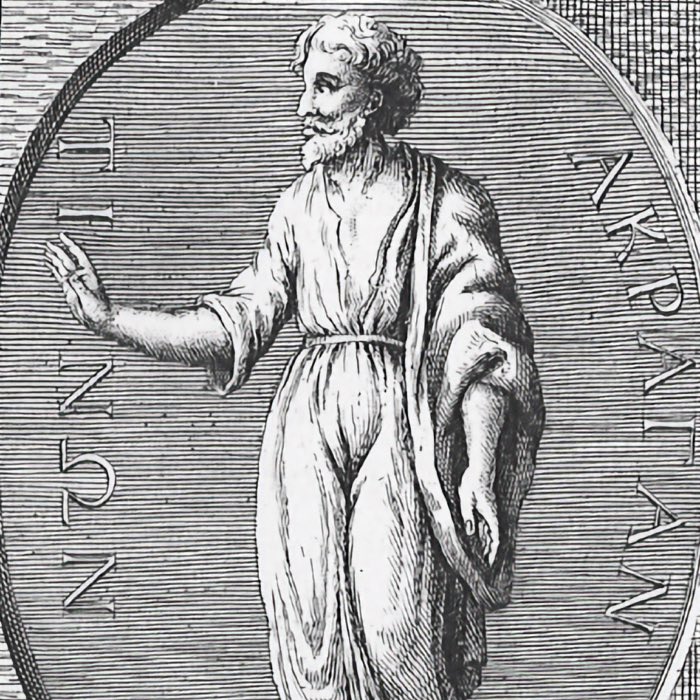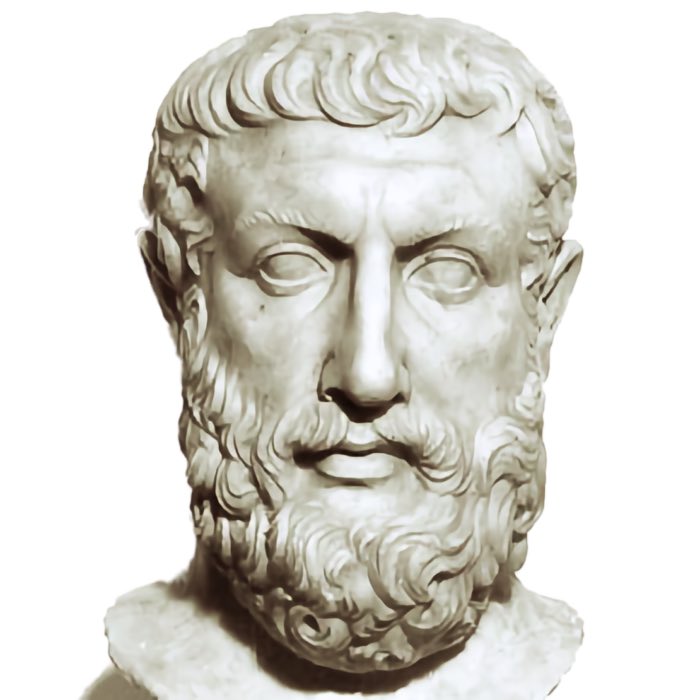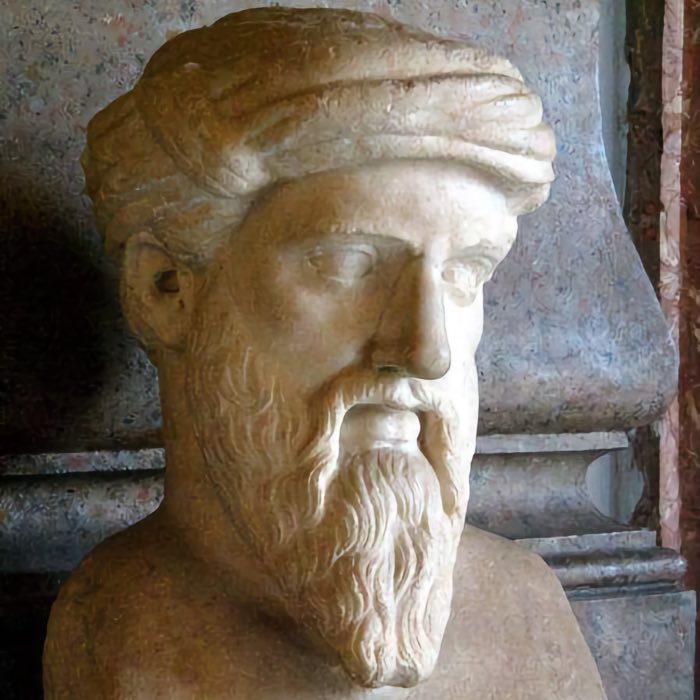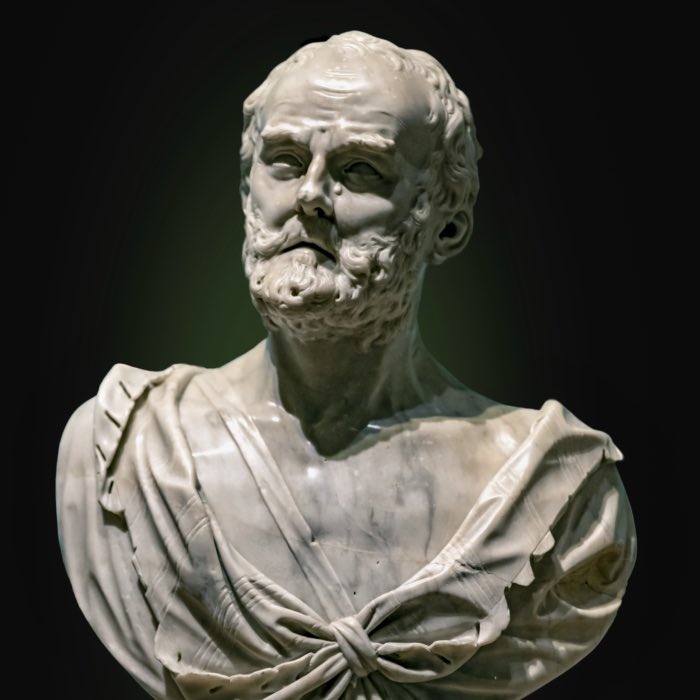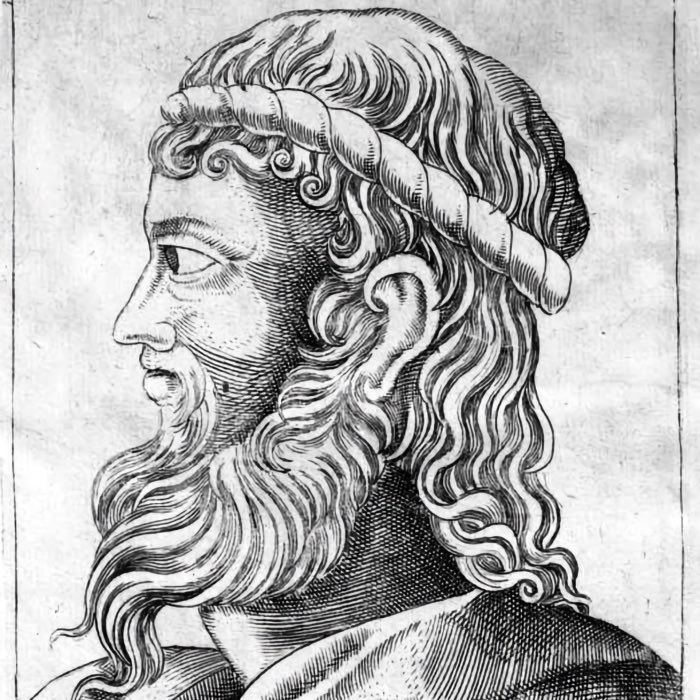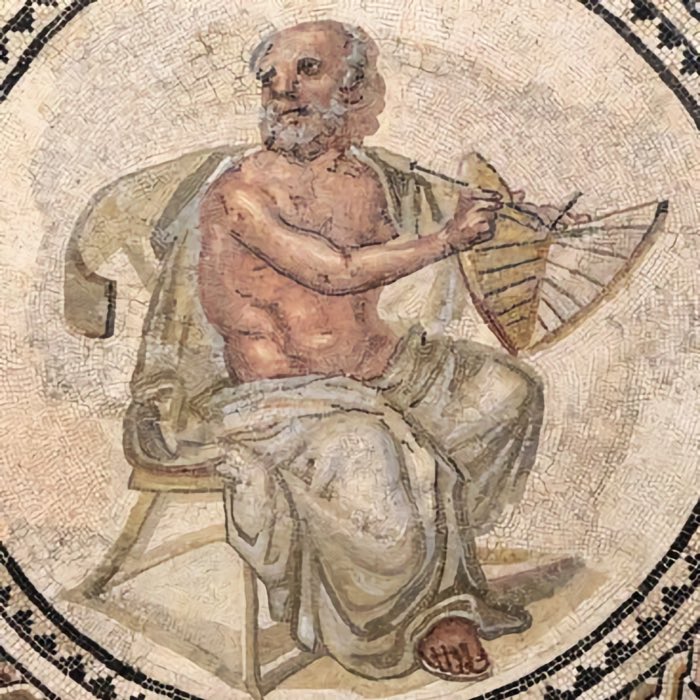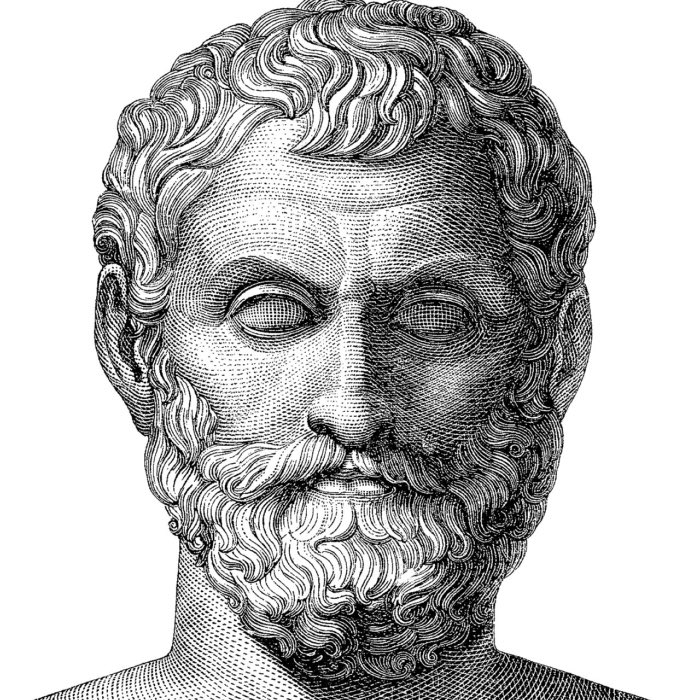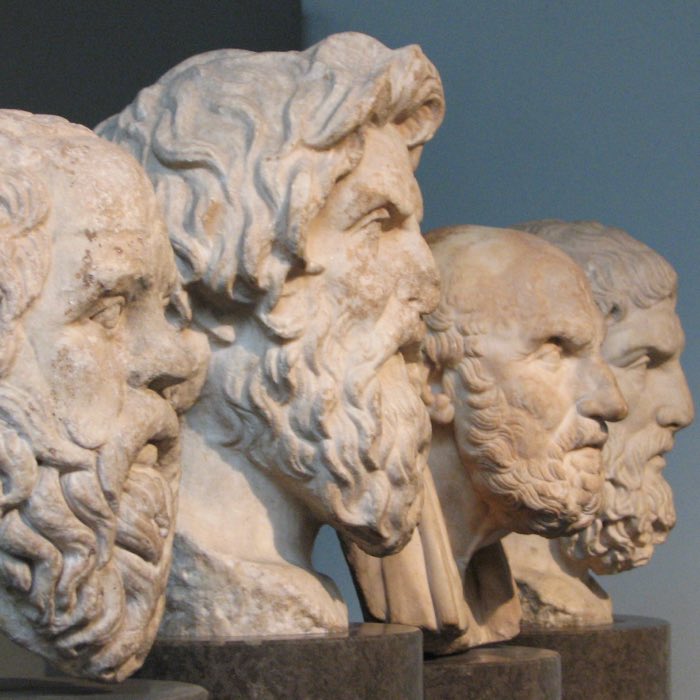Weekend Stories
I enjoy going exploring on weekends (mostly). Here is a collection of stories and photos I gather along the way. All posts are CC BY-NC-SA licensed unless otherwise stated. Feel free to share, remix, and adapt the content as long as you give appropriate credit and distribute your contributions under the same license.
diary · tags · RSS · Mastodon · flickr · simple view · grid view · page 30/51
Democritus: The father of atomism and the materialist worldview
Democritus of Abdera (circa 460–370 BCE) stands as one of the most significant figures in ancient Greek philosophy and the history of science. Building on the work of his teacher Leucippus, Democritus developed the first systematic theory of atomism, positing that all phenomena in the universe arise from the interactions of indivisible, eternal particles (atoms) moving through the void. His materialist and deterministic worldview represented a radical departure from earlier metaphysical systems, challenging traditional notions of divine causality and emphasizing natural explanations for the diversity and complexity of existence.
Anaxagoras: The philosopher of nous and the infinite divisibility of nature
Anaxagoras of Clazomenae (circa 500–428 BCE) was one of the most innovative and influential figures in pre-Socratic philosophy. His work bridges the naturalistic inquiries of earlier Ionian thinkers and the metaphysical developments of later classical philosophy, particularly in the works of Plato and Aristotle. Anaxagoras is best known for his introduction of nous (mind or intellect) as the organizing principle of the cosmos and his theory of infinite divisibility, which posits that all things contain portions of every other thing.
Empedocles: Pluralism, cosmic cycles, and the forces of love and strife
Empedocles of Acragas (circa 495–435 BCE) occupies a unique position in the history of ancient Greek philosophy, blending scientific inquiry, metaphysical speculation, and religious mysticism. A poet, physician, and philosopher, Empedocles is most notable for his pluralistic cosmology, which posits that all things arise from the interplay of four eternal elements — earth, air, fire, and water — combined and separated by the opposing forces of Love (philia) and Strife (neikos). This framework represents a significant response to the monism of earlier thinkers such as Parmenides and Heraclitus, while also addressing the challenges of reconciling change and permanence in the cosmos.
Parmenides: The philosopher of being and the foundation of metaphysics
Parmenides of Elea (circa 515–450 BCE) is one of the most significant figures in the history of philosophy. As the founder of the Eleatic school, he introduced a radical and systematic approach to metaphysics that profoundly influenced subsequent thinkers, from his immediate successors in ancient Greece to the modern tradition of ontological inquiry. His surviving work, a philosophical poem entitled On Nature, offers a vision of reality that emphasizes the primacy of being (to on), the unity and permanence of existence, and the limitations of sense perception in attaining truth.
The Pythagoreans: Philosophy, mathematics, and the harmony of the cosmos
The Pythagorean school, founded by Pythagoras of Samos in the 6th century BCE, represents one of the most influential and enigmatic movements in ancient Greek philosophy. Blending mathematics, metaphysics, ethics, and mysticism, the Pythagoreans sought to uncover the underlying order and harmony of the cosmos. Their emphasis on numbers as the fundamental principles of reality marked a significant departure from earlier natural philosophers, paving the way for the development of mathematical science and metaphysical speculation in the Western tradition.
Heraclitus: The philosopher of change and the logos
Heraclitus of Ephesus (circa 535–475 BCE) stands as one of the most enigmatic and influential figures of early Greek philosophy. Known as the ‘philosopher of flux’ (pánta rheî, ‘everything flows’), Heraclitus developed a vision of reality grounded in the principles of perpetual change, opposition, and unity. His aphoristic and often cryptic statements — many of which survive only as fragments — challenge conventional thinking and emphasize the dynamic interplay of order and chaos, the finite and the infinite. Central to Heraclitus’ thought is the concept of the logos (reason, word, or principle), which he saw as the underlying structure of the cosmos, governing its constant transformations.
Anaximenes: The philosopher of air and the continuity of nature
Anaximenes of Miletus (circa 586–526 BCE), the third and youngest of the early Milesian philosophers, is a pivotal figure in the development of pre-Socratic natural philosophy. Building upon the inquiries of his predecessors, Thales and Anaximander, Anaximenes sought to refine the search for the arche (the primary principle or substance of all things) by proposing air as the fundamental substance underlying all existence. His work represents an important stage in the evolution of Greek thought, as it combines empirical observation with a systematic explanation of natural phenomena, moving toward a more refined understanding of the processes governing the cosmos.
Anaximander: Pioneer of cosmology and natural philosophy
Anaximander of Miletus (c. 610–546 BCE), a successor of Thales and a pivotal figure in early Greek philosophy, stands out as one of the first thinkers to grapple with the structure and origins of the cosmos through systematic reasoning. His work represents a significant advance in the intellectual project initiated by his predecessor, moving beyond the identification of a single material principle to explore abstract and metaphysical explanations of existence. Anaximander’s contributions to cosmology, geography, biology, and metaphysics not only expanded the horizons of early Greek thought but also laid the groundwork for the development of science and philosophy.
Pre-Socratic natural philosophy and Thales: The shift from myth to logos
The emergence of natural philosophy in ancient Greece marks one of the most significant intellectual shifts in human history. The transition from mythological explanations of the cosmos to rational inquiry laid the foundation for philosophy and science as we know them. At the forefront of this transformation was Thales of Miletus (circa 624–546 BCE), traditionally regarded as the first philosopher in the Western tradition. Thales’ contributions represent the beginning of a profound reorientation in human thought — one that sought to understand the natural world through reason (logos) rather than myth (mythos).
Greek philosophy and the foundations of Western thought
Greek philosophy represents a pivotal chapter in the history of Western intellectual development. Originating in the ancient Mediterranean world, it marks a transformative shift from mythological explanations of the cosmos to systematic and rational inquiry — a movement encapsulated by the transition from mythos to logos. This post begins a series exploring the evolution of Greek philosophical thought, its key figures, and its impact on Western intellectual traditionsXT.
